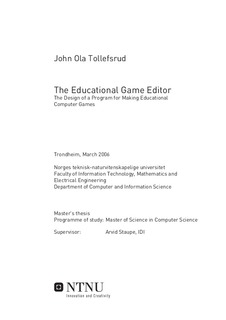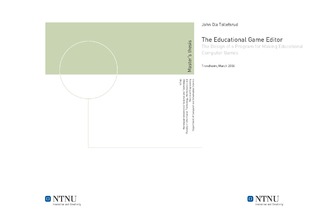| dc.description.abstract | This report is about computer game based learning, how to make a program for making educational games, the possibilities to use a hypermedia structure for storage of the data in an educational game, and different learning theories related to computer game based learning. The first part is about the different learning theories behaviourism, cognitivism, constructivism, socio-constructivism, and situated learning. The different theories are related to learning games, and a classification of game based learning is also given. Hypermedia is a smart and efficient way of organizing data, and is a relevant solution for use in education and games. The relationship between data, information and wisdom is central, and how the hypermedia base is constructed and different information structures are described. The advantages and limitations of use of hypermedia in education are discussed, and examples of use, as in OPSYS and the Mobile instruction system, are given. There exist some computer games for use in higher education, and some of them are described. To make a good educational, many certain requirements have to be fulfilled both aspects in game design and learning aspects. The main part of the report is about the Educational Game Editor. The idea is to design a program for making computer games for use in education. Before the design, the Software Requirements Specification is presented, containing functional and quality requirements, and scenarios to exemplify the requirements. The conceptual design of the program gives an overall description and describes the phases of creating a game and the elements the game consists of: file management, object management, Library, and Tools. The main architectural drivers are usability and availability. The program must be easy to use and be stable and not crash. An example of making a simple game about the history of Trondheim explains how to use the program in steps, and gives a good guide for the users to make their own game. | nb_NO |

